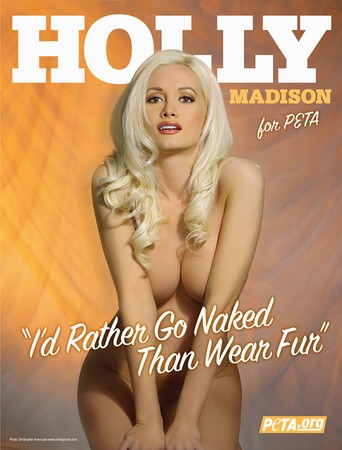I’ve talked about PETA’s extremist advertisements before. Now, after I’ve read Lesli Pace’s excellent article Image Events and PETA’s Anti Fur Campaign, I’d like to discuss not just the effectiveness of these advertisements, but also our response to them.
Consider:

Nikki Craft, a women’s rights activist, finds a few issues with the PETA “I’d Rather Go Naked” campaign:
Do they pose nude? No, they’re fake nudes. Do they even portray liberating images of women and nudity? No. They work with Playboy Magazine where women are herded like cattle in limiting and stereotypical mass media presentations.
This perspective is fascinating. The notion that these women aren’t truly comfortable with their bodies and liberating women makes sense in this context because, if they were “truly” comfortable with their bodies, they would not feel the need to “strategically” hide certain body parts. On the other hand, perhaps that is the very point that PETA is trying to make by working both within and against the system: it may well be that PETA deliberately portrays women in this fashion to reinforce the fact that yes, our society does treat animals cruelly and yes, our society does objectify women.
The outrage that many people feel over the PETA advertisements could be the reason for why they chose to depict women so deliberately; if you are this upset that women are being objectified, then you should be equally upset that animals are treated poorly. PETA might be spreading awareness and protesting against objectification of women by engaging in the objectification themselves.
How do you feel about extreme advertising? Are the PETA advertisements an objectification of women or are they trying to throw that objectification back at society?
I feel that PETA isn’t as smart as you, but just smart enough to know that sex sells.